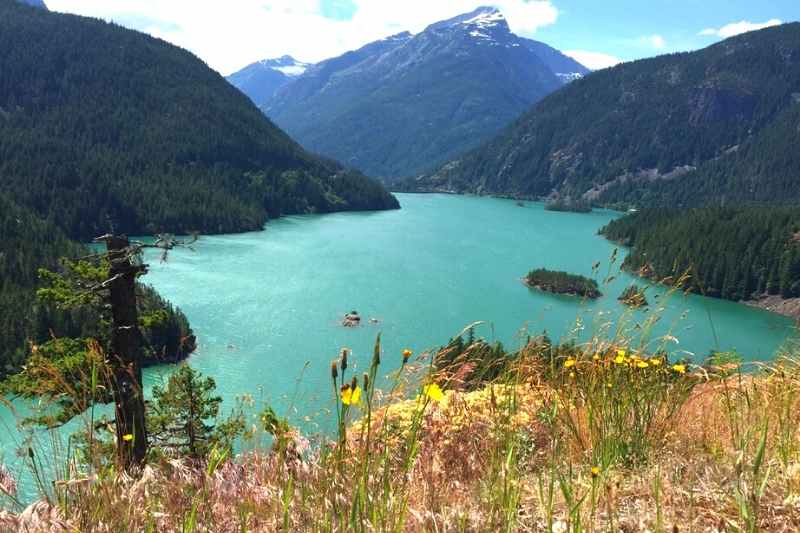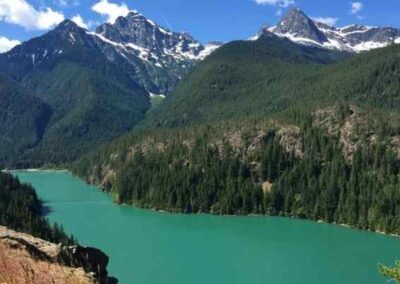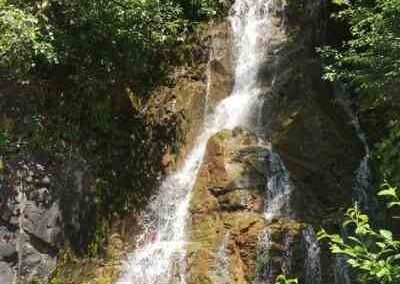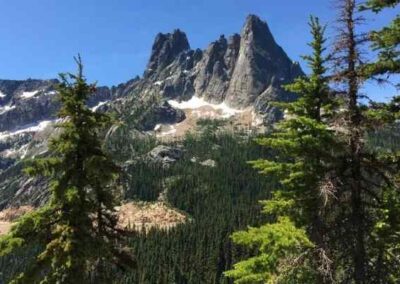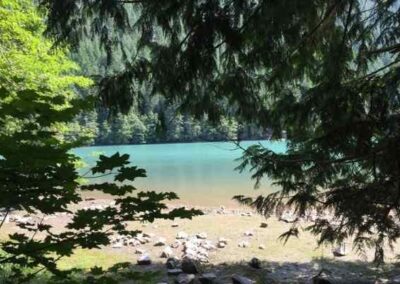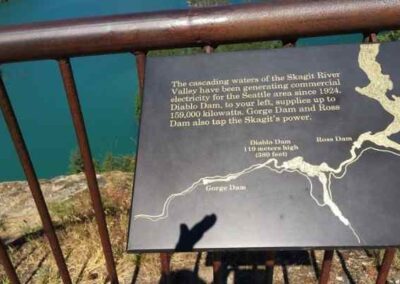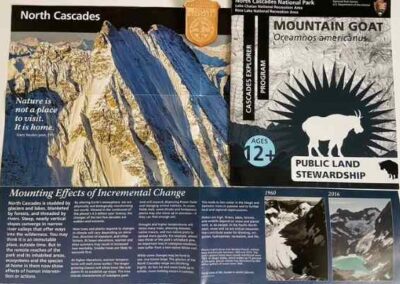Do you love vast native wilderness, turquoise water, majestic trees, plants, mosses, and wildlife?
If so, then North Cascades National Park in Washington State should be at the top of your bucket list. North Cascades National Park is a beautiful treasure with mountain scenery, mesmerizing cascading waterfalls, glacier-sculpted mountains with snow-capped peaks, cliff walls, spires, and more. It’s hard to believe it is one of our least visited National Parks!
“If there is magic on this planet,” American Anthropologist Loren Eiseley wrote, “it is contained in the water.”
Here are Yvonne’s tips for getting the most out of your visit.
Arriving at the park:
Drive Washington State Route 20 (North Cascades Highway) from Burlington on the west or Twisp on the east to reach the North Cascades. State Route 20 passes Gorge, Diablo, and Ross Lakes in Ross Lake National Recreation Area. Only Gorge, Diablo, and Ross lakes can be reached by vehicle from State Route 20. The wilderness scenery along this road is spectacular: over 94 percent of the park and recreation areas are the Stephen Mather Wilderness Area.
There are several overlooks and hikes, including a short, wheelchair-accessible boardwalk through an old-growth forest that is simply stunning. You may want to bring a camera with an extra battery or a battery for your phone. I guarantee you’ll want to take many pictures!
Where to Stay:
Lodging can be found on Ross Lake, in Stehekin, and at the North Cascades Environmental Learning Center. There are four vehicle-accessible campgrounds: Goodell Creek, Newhalem Creek, Colonial Creek, and Hozomeen.
- Make reservations well in advance as these campgrounds fill up quickly between May and September. If there happen to be sites available it will be on a first-come, first-served basis.
- Also, reserving a camping site near the stunning turquoise alpine lakes is pretty hard; but do not let that deter you, as there are some beautiful camping sites nestled in the old-growth forest.
What to See:
- The North Cascades Visitors Center in Newhalem should be one of your first stops once inside the park. Learn about this magnificent park’s natural and cultural history, which is diverse and rugged. Ask a park ranger for recommendations on accessible trails to hike, picnic, and explore. There are also informative and educational exhibits, audio-visuals, and ranger-led programs to participate in.
- Hiking trails – There are approximately 400 maintained trails in the North Cascades National Park. You can observe over 1,700 species of plants, ferns, fungi, birds (including the bald eagle), bears and other mammals, reptiles, amphibians, and insects. Pick up a trail map at the visitor center.
- Ross Lake National Recreation Area – This area stretches along the Skagit River below the dams. There are many outdoor recreational activities such as boating, fishing, hiking, and more. Ross Lake rents canoes, kayaks, and small motorboats and offers portage service between Diablo and Ross Lakes.
- Diablo Lake, a reservoir created by the Diablo Dam, is truly astonishing as the color is a magnificent turquoise, surrounded by snow-capped mountain peaks and pines. Take a hike on the Diablo Lake Trail. For more information on this beautiful scenic trail with old-growth forest, visit the Washington Trails Association website.
- Be sure to pay attention to the posted speed limits along Route 20, as it’s easy to get distracted by the beauty. There are plenty of roadside turnouts to view the scenery safely. Be sure to keep an eye out for wildlife, pedestrians, bicyclists, rocks on the roadways, and other drivers.
Enjoy your experience and share your photos with us on Instagram @one_planet_life.
Yvonne’s North Cascades National Park Photo Gallery
Check out Yvonne’s Insider Tips for exploring these other national parks:
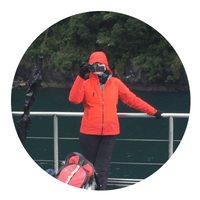
Written by Yvonne Dwyer
Master Naturalist and OPL Content Contributor
“It is truly an honor for me to be a contributor to One Planet Life. By sharing my experiences and lifetime of learning, I hope to inspire conservation, sustainability, stewardship, and awareness of enjoying the natural wonders of the world for the wellbeing of people and the planet.”

